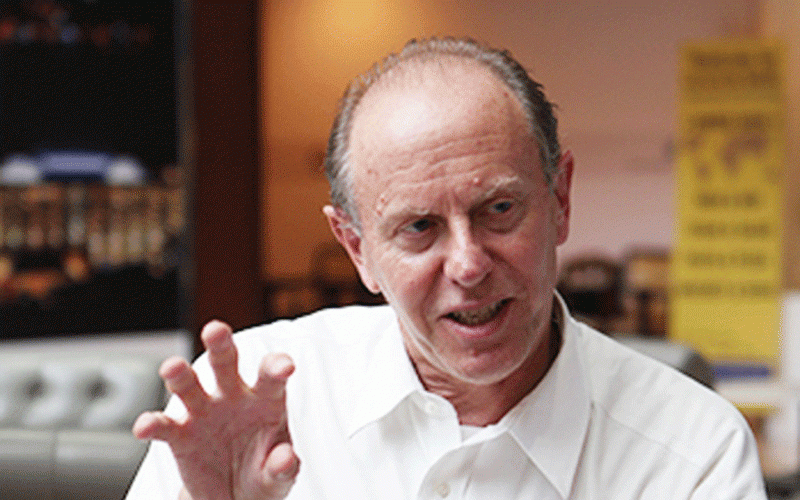
IN THE mid nineties, Southern Africa was a place suspended between the echoes of freedom fighters’ anarchic legacy and the nervous rumours of a technological future.
It was a time when the present was experienced with perpetual anticipation, one of which we were all just passing through anxiously awaiting a more definite destination.
The insecurity of status created by social mobility provoked class consciousness as the once rebellious youths opted for white collar careers and their nomadic impulses were superseded by the imprisoning luxury of rich neighbourhoods.
Today, anyone who clings to class for existential revelation is losing a war of attrition against an enemy who they are unable to locate, the reason being, class consciousness is waning.
Education has always been viewed as the gateway to a high and respectable social stratum. Especially for all former British colonies; Oxford for example provided a sort of resonance and effortless restraint.
Any school associated with Oxford was regarded as having some peculiar and persistent quality, what Jorge Luis Borges described admiringly as a “secret portion of divinity”.
Therefore enrolling one’s child to the best schools ushered in education politics with pecking orders and power games that no one acknowledged yet everybody played. Parents mortgaged their homes, sold their livestock and acquired bank loans to propel their children into upper class citizens.
Today, however, the world’s focus has shifted from institutional emphasis to curriculum manifestos and like so many other parts of our lives these days education has become a global enterprise. Wherever they come from, today’s students have a different perspective on education from their parents.
- Chamisa under fire over US$120K donation
- Mavhunga puts DeMbare into Chibuku quarterfinals
- Pension funds bet on Cabora Bassa oilfields
- Councils defy govt fire tender directive
Keep Reading
Television, the Internet and their own travels has caused them to see the world as a much smaller place that their parents once did. Both high school and college students are more confident in accepting the challenge of moving from one country to another, from one culture to another.
In many cases they can even apply to schools over the Internet, and are also more aware of the overall cost of education paying attention to value for money plus for many education linked to travel is a better option than education at home.
Over the years pop culture has been a trusted social mobility barometer with fashion being the main accessory. The more privileged could be easily spotted dorning designer labels such as Diesel, Phat Farm, Fubu or Tommy Hilfiger while the have-nots walked around with an ever increasing sense of anonymity wearing knock offs.
These knock offs symbolized the street fashion used by youths to protest against society. The fashion was innovative, often deeply creative and wild and less conscious of designer labels.
The clothes were wild but wearable, often cheap and lent to their owners a street wise ego-tickling attitude. They became known as Fong-Kongs after the title of a song lamenting fashion rip-offs. Fast-forward to 2014, the youths and adults alike know the value of wearing genuine labels and they are willing to save in order to get them.
Much of the new youthful grasp at the haute and often very expensive couture comes through celebrities who gave earned culture heroes status.
The songs they listen to are about cars, women and clothes. Marketers nowadays realise that it is not only the celebrities who have the unnerving eye for detail combined with a theatrical flourish, the ordinary consumer’s fashion taste is driven by poetic precision.
When it comes to fashion the eagerness for self expression has blurred the line between classes.
The 2000 panic over Bovine Spongifom Encephalopathy and its brain wasting human variant, Creutzfelt-Jacob disease better known as the “mad cow” disease redefined the culinary traditions. Prior to that, any cuisine you could not pronounce was strictly for the class conscious.
“Mad Cow” disease forced the French to give up the Pot au feu (boiled beef with Marrow Bones), the Italians learnt to do without Fiorentina (Tuscany’s celebrated dictionary-thick-T-Bone) and the Germans had to say: auf wiedersehen to Tafelspitz (Stewed beef) oxtail soup and beef sausages. While the die-hard beef eaters waited for the crisis to blow over so that they can return to their old carnivorous habits, other consumers started seeking alternatives.
The most obvious being sheep, pork poultry and fish. However, the truly health conscious found potential problems with most of these alternatives. Sheep are susceptible to scrapie, a brain destroying disease that causes mad cow. Mass produced pork is bulked up with antibiotics and chickens are prone to bird flu.
Health experts have also warned consumers about the risks of red meat consumption forcing some consumers to completely eliminate red meat in favor of an essentially vegetarian meat. Today there is an accelerated trend toward lighter more defined and more serene cooking without much class distinctions.
Until the mid 1990s, online communities were largely ghettos for Geeks who hid behind online aliases. Thanks to easy to use interfaces and fine grained privacy controls, social networks have been transformed into vast public spaces where millions of people now feel comfortable using their real identities.
Sites such as Facebook for example has helped people make zillion of new connections. Now one does not feel the compulsion to go to the right parties or hangouts to make friends. Advertises are being drawn to the leading sites by their sheer scale.
Facebook’s audience is bigger than any television network that has ever existed on the face of the earth (the Chinese Weibo is also making its debut).
According to the Interactive Advertising Bureau the networks have the ability to target advertisement with laser-like precision, thanks to the data they hold on their user ages, gender and interest. Advertisers are seeing a great returns on their investment as firms realise that people using social networks are more likely to engage with brands than skeptics think.
Network also provide a powerful viral marketing effect because friends use them to tell one another about things they have discovered.
Markets have long known that such recommendations are largely important in purchase decisions. Social networks are harnessing technology to accelerate this process by for example automatically alerting a person’s friend when he/she signs up to become the fan of a particular brand or product on a site.
After all has been said done the nagging question remains whats class got to do with it?
Harriman Chidawanyika is a consumer psychologist.










